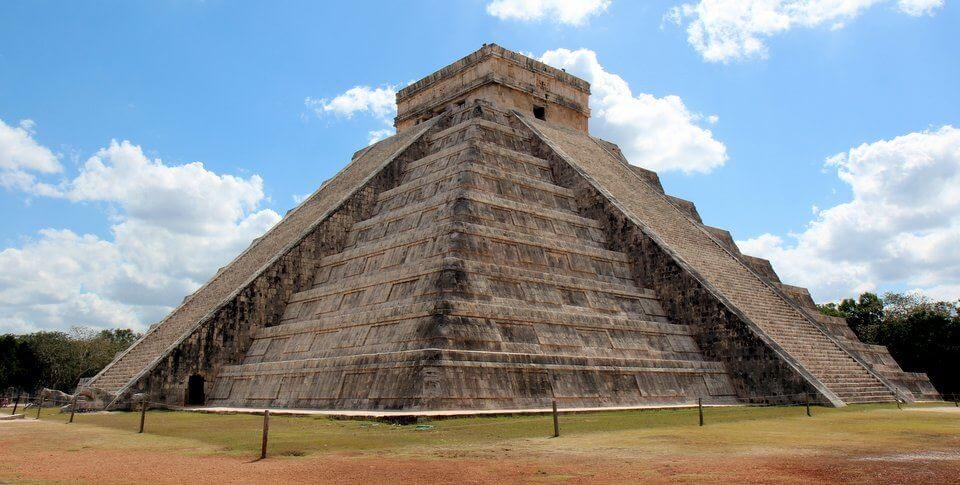
The restored sides of El Castillo at Chichen Itza
Once you make it past the entrance halls and hawkers of Chichen Itza you’re greeted with probably the most iconic structure in Mexico – the 25m high step pyramid called El Castillo, the Pyramid of Kukulkán, or less evocatively ‘Structure 5B18’.
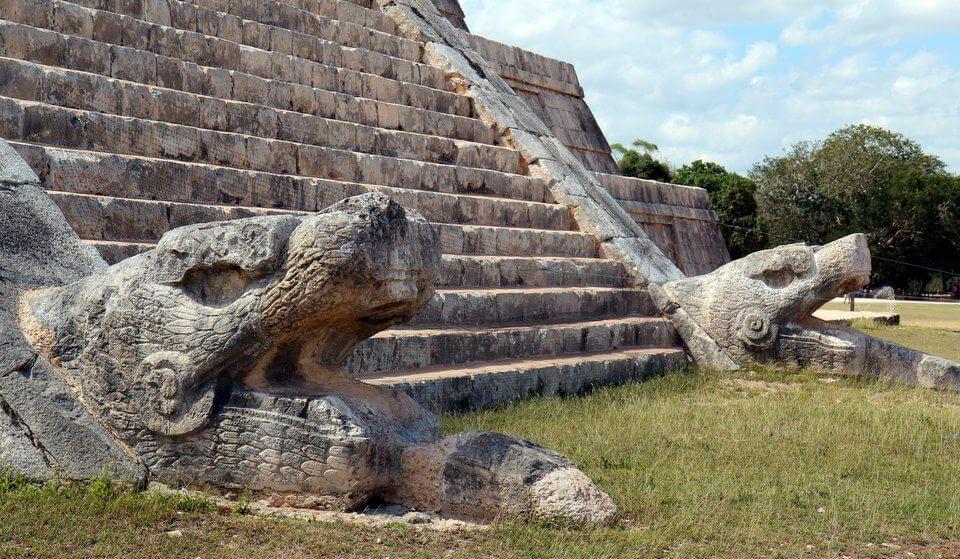
Snake carvings at the base of the northern staircase of El Castillo in Chichen Itza
Kukulan is a feathered snake god, similar to Quetzalcoatl. The pyramid dedicated to him was designed as a calendar.
The four sided pyramid has staircases on each face, each of which has 91 steps. Combined with the platform, this totals the 365 days of the solar year.
There are 18 terraces on each side of the stairways, equating to the number of months in the Mayan religious calendar (which is on sale all around the site, on everything from t-shirts to tea cloths).
Perpendicular to the terraces are the 52 vertical panels, representing the 52-year cycle of the solar and religious calendars.
El Castillo is built on top of a smaller, earlier pyramid. Up until 2006 it was possible to climb El Castillo and go inside. On the northern side a small passageway leads inside to sacrificial altar – a red jaguar. The jaguar originally had jade eyes and teeth, but after they were stolen by visitors it is no longer accessible.
The outer pyramid was built sometime in between the 9th and 12th centuries, but fell into disrepair. In the 1920’s and 30’s, archaeologists restored two sides of the temple. The other two can still be seen in their original state.
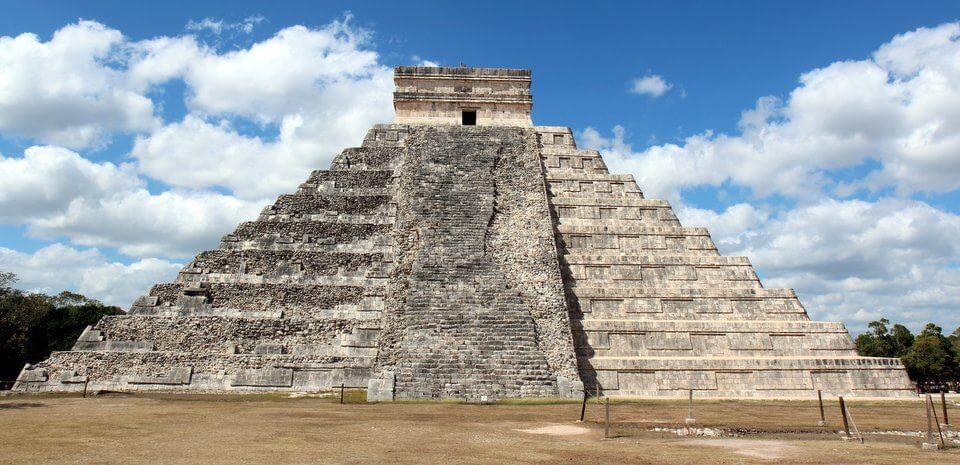
The unrestored sides of El Castillo at Chichen Itza
Winter Equinox at Chichen Itza
Last time I was here it was the right time of year to see the winter solstice.
El Castillo is aligned so that the spring or autumn equinoxes create an optical illusion. As the sun sets, the north western corner of the terraces cast a shadow on the northern stairway, creating a diamond pattern representing a snake’s body. The effect is enhanced by the huge snake heads carved at the bottom of the stairs.
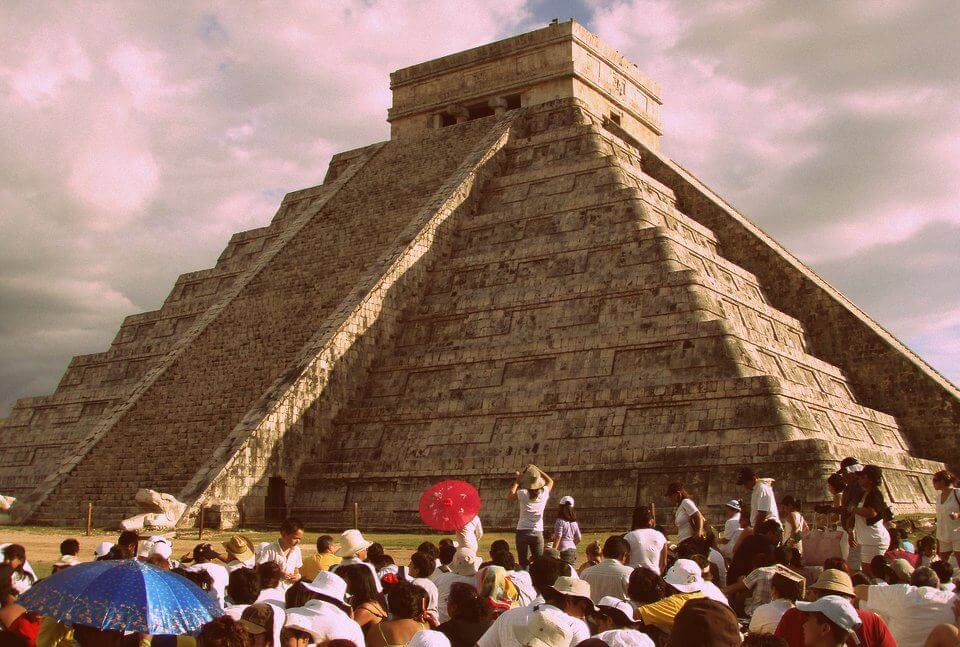
Snake appearing on the steps of Chichen Itza, during the solstice sunset
Whilst it’s quite a spectacle, it’s popular with tourists and locals alike. I’m glad I’ve had the chance to see it again on a less hectic day.
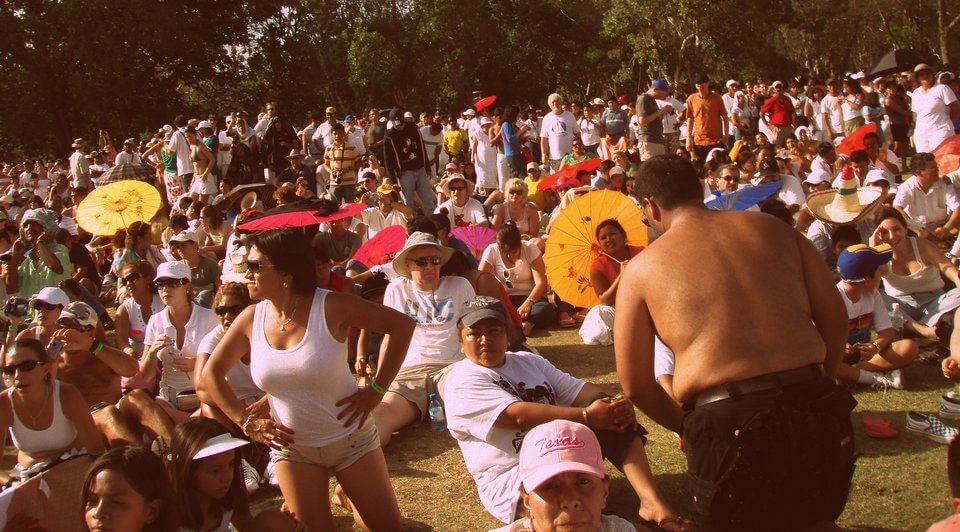
Unfortunately the price for seeing the snake is dealing with the crowds of up to 10,000 people.

Pingback: @RtBlast
Pingback: @SilentThunder_
There is summer solstice and winter solstice. The equinox dates are in September and March.